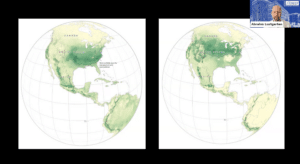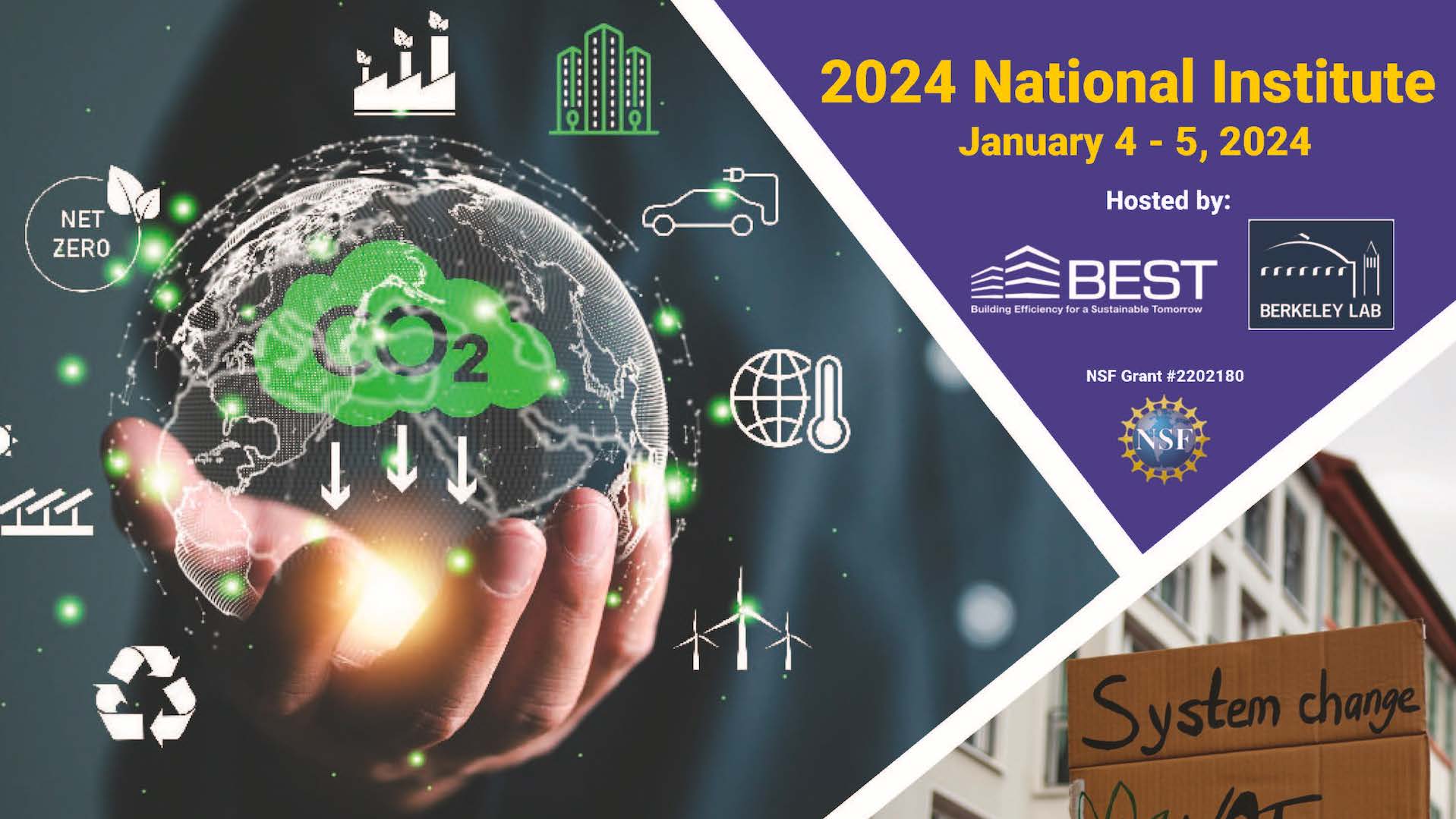On January 4 and 5, the 2024 National Institute brought together hundreds of students, educators, and industry professionals to delve into new initiatives, policies, and research advancing building decarbonization and energy efficiency.
Co-hosted by the Building Efficiency for a Sustainable Tomorrow (BEST) Center and the Lawrence Berkeley National Lab (LBNL), this year’s conference centered on the theme, “Less Carbon, More Action! Strategies for Buildings & Technician Education,” highlighting legislative and international decarbonization efforts; innovations and challenges in energy efficiency, electrification, and Building Automation Systems (BAS); and strategies and opportunities for educators and industry.
On the Move: An Overheating Earth and the Great Climate Migration
Abrahm Lustgarten, a journalist and climate researcher, opened Day One of the Institute as a keynote speaker, setting a new perspective on how climate change will impact human behavior. Lustgarten discussed how shifts in climate have historically dictated the rise and fall of past civilizations and forced humans to migrate from regions of extreme weather to more hospitable environments for resources. Following this pattern, climate change can remap inhabitable areas in the future by dramatically expanding the areas deemed too extreme to be sustainable for human life. This shift will disproportionately impact residents of rural regions that are often dependent on fertile soil and abundant water and will lead to an exodus that mirrors the migration of early humans.

Lustgarten also presented prospective future scenarios contingent upon different levels of carbon emissions. For example, under a high-emission scenario, coastal flooding could displace up to 13 million Americans, and approximately 160 million people—nearly half the U.S. population—may be pushed outside of regions that are no longer sustainable for resources. This migration, combined with climate change effects on crop yields, would severely impact local economies, household energy costs, and even racial dynamics, as evidenced by observations in other areas undergoing similar environmental changes. Lustgarten underscored the future impact of carbon emissions and encouraged attendees to take steps towards addressing energy efficiency issues to not only slow the rate of climate change, but to also lessen the number of people who will be negatively impacted by its effects.
U.S. Building Decarbonization Pathways and Opportunities
In the past two years, the United States re-joined the Paris Agreement and set a goal to achieve a net-zero energy economy by 2050. Mary Ann Piette, the associate lab director for the Energy Technologies Area (ETA) at the Lawrence Berkeley National Laboratory (LBNL), discussed decarbonization of the buildings sector as a national strategy for achieving this goal as the keynote speaker for Day Two of the Institute. Her presentation addressed approaches in energy efficiency, electrification, integrating building loads with the changing electric grid, and optimizing the use of distributed energy resources (DERs).

Piette presented five decarbonization highlights:
- Turning windows into energy savers: Conventional windows present a weak link in building envelopes, allowing for substantial energy leakage each year equivalent to 38.5 million tons of coal. Adopting thin-triple windows could potentially reduce this energy leakage and result in a total of $10 billion savings annually.
- Appliance energy efficiency = huge energy savings: The implementation of higher appliance and equipment standards has not only reduced consumers’ utility bills but also conserved energy and water resources.
- Enabling automated commissioning and fault correction: Smart building software is unlocking automated energy efficiency and demand flexibility in buildings.
- Making buildings responsive to the grid: Grid-responsive buildings can reduce overall loads; shift usage to times of cleaner, cheaper, and more abundant electricity; and lower peak demand, resulting in lower investment in generation and transmission capacity.
- Energy strategies for cities and communities: Researchers at LBNL are leveraging different strategies to improve urban efficiency:
- Using cool surfaces on roofs helps in cooling urban heat islands, thereby reducing building energy consumption and improving comfort.
- Tools like the City Building Energy Saver can help cities model their retrofit scenarios, photovoltaics, and urban heat islands to support urban planner decisions.
- Integrated district thermal energy is a system currently used by corporate, university, and military campuses to facilitate bi-directional energy flow to different buildings. The same strategy can be used to reduce energy when any group of buildings is interconnected in a city.
The 2024 National Institute was sponsored by Contemporary Controls, Schneider Electric-North Carolina, HVAC Excellence, the National Science Foundation (NSF), and endorsed by the American Society of Heating, Refrigerating and Air-Conditioning Engineers (ASHRAE).


